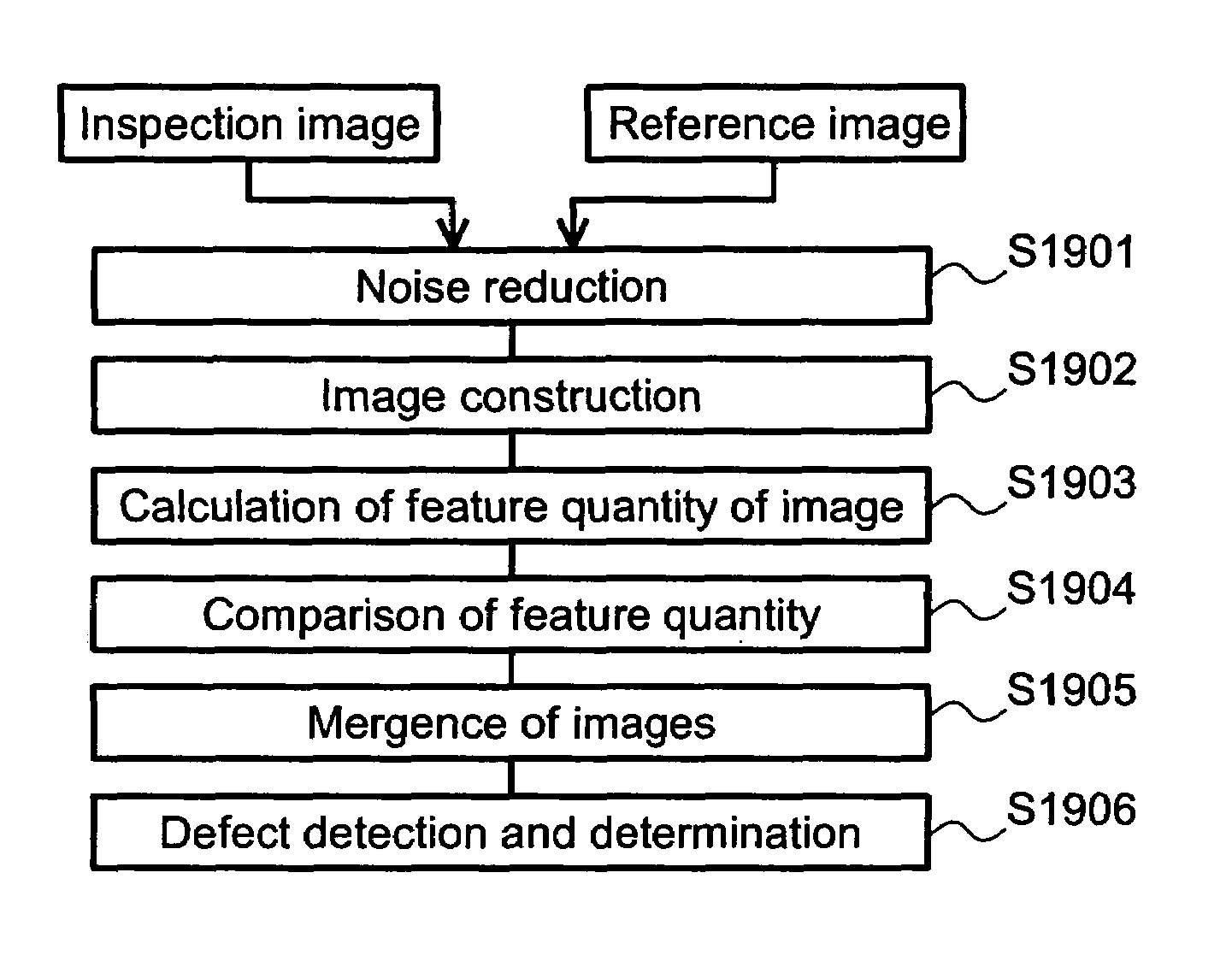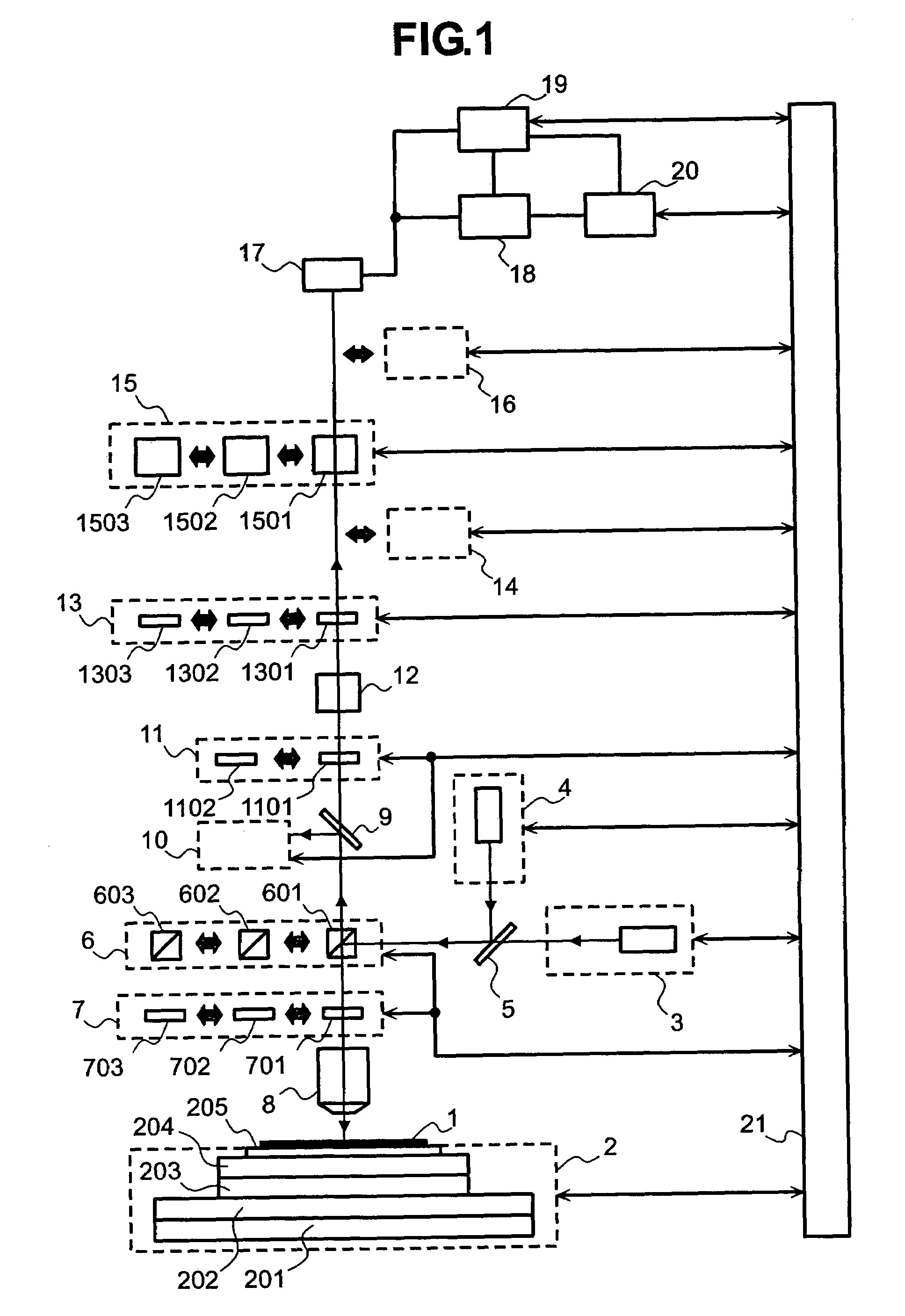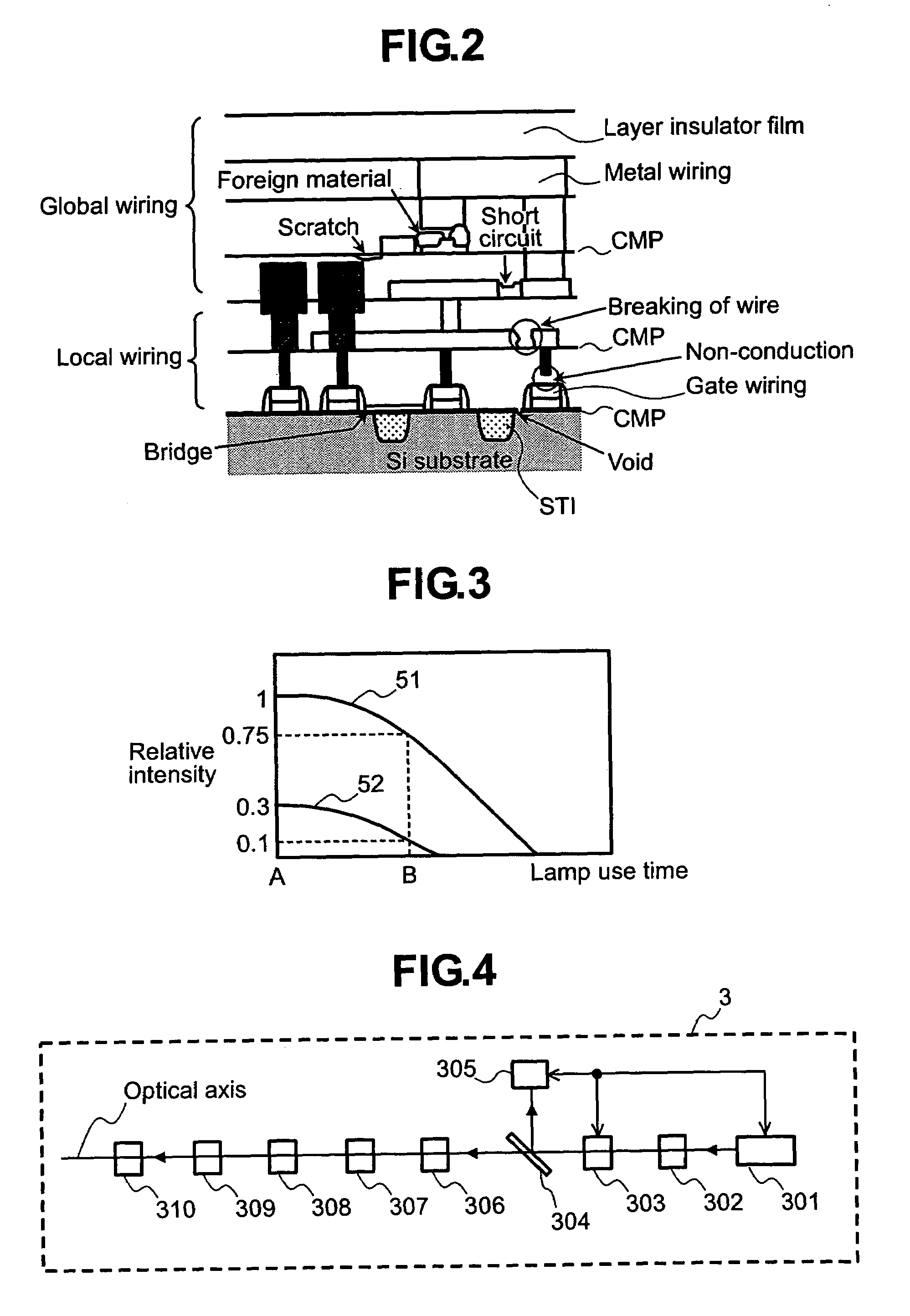Method and apparatus for inspecting pattern defects
a pattern defect and inspection method technology, applied in the direction of instruments, spectrometry/spectrophotometry/monochromators, optical radiation measurement, etc., can solve the problems of difficult to find with certainty target defects that require product control, complicated lsi devices, and difficult to detect defects that are difficult for conventional technology to detect, so as to reduce the influence of an intensity, reduce the erroneous detection of grains, and detect various defects on the wafer stably
- Summary
- Abstract
- Description
- Claims
- Application Information
AI Technical Summary
Benefits of technology
Problems solved by technology
Method used
Image
Examples
first embodiment
[0054]An embodiment in which an inspection apparatus according to this invention is applied to the inspection of a semiconductor device is shown in FIG. 1. The pattern defect inspection apparatus of this invention is composed of a conveyance system 2 for supporting and moving a wafer 1 that represents a target of inspection, illumination means 3 and 4 having different wavelengths, a dichroic mirror 5, a beam splitter (hereinafter referred to as BS) unit 6, a light modulation A unit 7, an objective lens 8, a BS for A / F 9, A / F detection unit 10, a light modulation B unit 11, a relay lens 12, a light modulation C unit 13, a pupil observation unit 14, an imaging lens unit 15, a sample surface observation unit 16, a light detector unit 17, a signal processing circuit 18, an auto classification (hereinafter referred to as ADC) unit 19, an input / output part 20, a controller 21 for these units, and an unillustrated relay lens and mirror. Here, arrows connecting the controller 21 and the var...
second embodiment
[0132]Another embodiment of the pattern defect inspection apparatus according to this invention is shown in FIG. 20. The pattern defect inspection apparatus of this invention is composed of: a conveyance system 2 that supports the inspection target wafer 1 and moves it, the illumination means 3 and 4 whose wavelengths are different, the BS units 22 and 23, the light modulation A unit 24, the objective lens 8, the A / F unit 25, the light modulation B unit 11, the relay lens 12, the light modulation C unit 13, the pupil observation unit 14, the imaging lens unit 15, the sample surface observation unit 16, the light detection unit 17, the signal processing circuit 18, the ADC unit 19, the input / output part 20, and an unillustrated controller, relay lens, and mirror.
[0133]This embodiment is different from the configuration explained in connection with Embodiment 1 in terms of the performance of the optical elements used in the BS units 22 and 23, the performance of the optical elements u...
third embodiment
[0140]Another embodiment of the pattern defect inspection apparatus according to this invention is shown in FIG. 24. The basic configuration of the pattern defect inspection apparatus of this embodiment is the same as that of Embodiment 1. This embodiment is constructed with a water injection system 26 and a drainage system 27, in addition to the configuration of Embodiment 1.
[0141]Next, details of the water injection system 26 and the drainage system 27 will be explained. The water injection system 26 has a function of supplying a medium 66 to a gap between the wafer 1 and the objective lens 8, and the drainage system 27 has a function of removing the medium 66 supplied to the gap between the wafer 1 and the objective lens 8. Here, the medium 66 has a refractive index that is larger than that of air (12 etc. at the illumination wavelength) and causes no damage to the wafer 1. For example, this may be pure water as regularly used in semiconductor factories.
[0142]The object of this e...
PUM
| Property | Measurement | Unit |
|---|---|---|
| wavelength | aaaaa | aaaaa |
| wavelength | aaaaa | aaaaa |
| wavelength | aaaaa | aaaaa |
Abstract
Description
Claims
Application Information
 Login to View More
Login to View More - R&D
- Intellectual Property
- Life Sciences
- Materials
- Tech Scout
- Unparalleled Data Quality
- Higher Quality Content
- 60% Fewer Hallucinations
Browse by: Latest US Patents, China's latest patents, Technical Efficacy Thesaurus, Application Domain, Technology Topic, Popular Technical Reports.
© 2025 PatSnap. All rights reserved.Legal|Privacy policy|Modern Slavery Act Transparency Statement|Sitemap|About US| Contact US: help@patsnap.com



